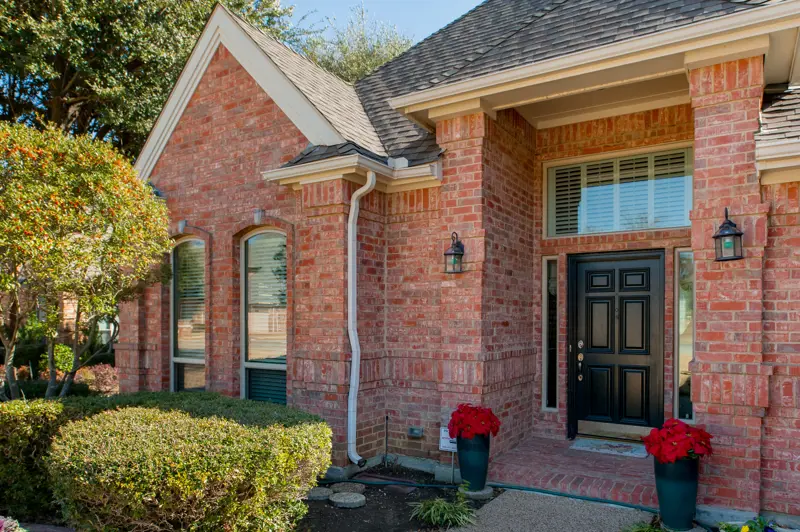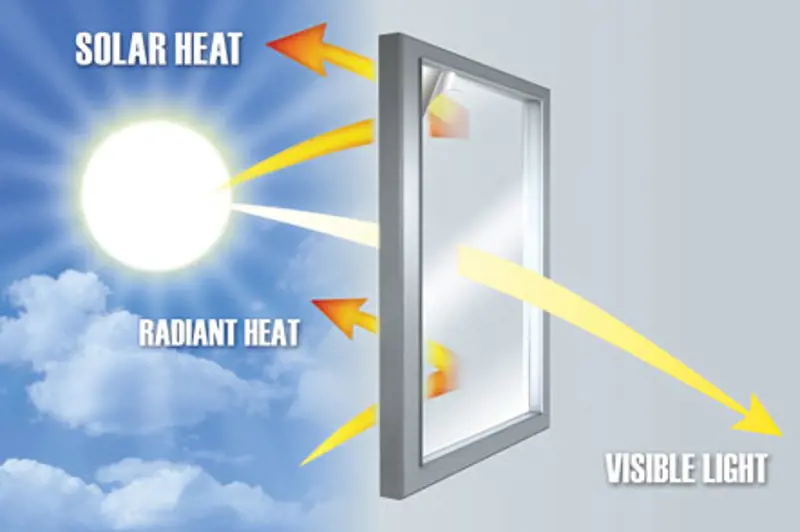
Save on Energy Bills with Effective Window Weatherstripping
Window weatherstripping is essential for keeping your home energy efficient. It seals gaps and cracks around windows, stopping drafts and heat from escaping, which can significantly reduce your energy bills.
But why is window weatherstripping important? What are its benefits, and how can you apply it effectively?
What Is Weatherstripping and Why Does It Matter?
Weatherstripping is vital to maintaining energy efficiency in your home. The term refers to materials that seal gaps around windows and doors, effectively creating a barrier to prevent air leaks. This sealing action plays a significant role in ensuring that your living space remains comfortable throughout the year.
The Importance of Weatherstripping
Understanding why weatherstripping matters involves considering its benefits:
- Energy Savings: Properly installed weatherstripping can substantially reduce energy consumption. Homes equipped with energy-efficient windows experience less heat loss, directly lowering heating and cooling expenses.
- Comfort: Weatherstripping enhances indoor comfort levels by minimizing drafts and cold spots.
- Cost-effectiveness: Investing in weatherstripping also protects your wallet. Reduced energy bills mean more savings for you.
The Purpose of Weatherstripping
The primary purpose of weatherstripping is to prevent drafts and air leaks, keeping both cool and warm air in, and cold or hot air out, depending on the season. Effective weatherstripping ensures that conditioned air stays inside where it belongs. This means your HVAC system doesn’t have to work overtime, leading to lower utility bills.
Incorporating the care and replacement of weatherstripping into your home maintenance routine is essential to achieving better energy efficiency.
Common Problems Caused by Poor Weatherstripping
When windows are inadequately weatherstripped, several issues can arise that negatively impact your home. Here are some common problems homeowners experience:
1. Persistent Drafts
Gaps around windows or doors allow cold air to seep in during winter and hot air to enter in the summer. This leads to a constant battle with your thermostat, causing discomfort and increased energy bills.
2. Increased Energy Costs
Poorly sealed windows or doors can account for up to 25% of your home's heat loss. As a result, heating and cooling systems work harder, consuming more energy and increasing utility costs.
3. Impact on Indoor Comfort
Cold spots near windows can make certain areas of your home uncomfortable. Inconsistent temperatures can also lead to reliance on space heaters or extra blankets, which only adds to energy waste.
4. Reduced HVAC Efficiency
When drafts are present, your heating, ventilation, and air conditioning (HVAC) system may struggle to maintain desired temperatures. This inefficiency can shorten the lifespan of your system and lead to costly repairs.
Addressing these issues through effective weatherstripping enhances comfort and reduces unnecessary expenses, which can positively affect your budget.
Types of Weatherstripping
1. Adhesive Backed Foam Tape
- Best for: Sliding or casement windows and even doors.
- Effectiveness: The foam compresses easily to fill gaps, providing a snug fit significantly reducing drafts.
- Ease of Installation: Installing adhesive-backed foam tape is straightforward. Simply peel off the backing and press the tape into place along the window frame. No special tools are required.
- Potential Durability Issues: While initially effective, foam tape may not hold up over time compared to other materials. Exposure to elements like sunlight and moisture can lead to deterioration, requiring periodic replacement.
Adhesive-backed foam tape is a practical solution for improving energy efficiency. However, before choosing the best product, it’s crucial to assess your specific window type and conditions.
2. Felt Weatherstripping
It is particularly useful in older homes where window frames may have warped or shifted over time.
Key points to consider include:
- Best for: Felt weatherstripping excels at sealing irregular spaces around windows and doors.
- Affordability: Felt weatherstripping is budget-friendly, making it desirable for homeowners looking to improve energy efficiency without breaking the bank.
- Versatility: It adapts well to various window shapes and sizes.
- Longevity Concerns: While practical, felt strips can wear out faster than other materials.
Incorporating felt weatherstripping into your home can significantly enhance comfort while addressing air leaks effectively.
3. V-strip (V-shaped Weatherstrip)
- Best for: Sashes that slide up and down.
- Effectiveness: The V-strip is highly effective in sealing gaps between sliding window sashes, minimizing air leakage. Its design creates a tight seal that significantly reduces drafts, enhancing comfort.
- Installation Complexity: While the installation process can be straightforward, it requires precision to ensure a snug fit without obstructing window functionality.
This weatherstripping option stands out among various weatherstripping types, such as adhesive-backed foam tape, due to its unique shape and sealing capabilities.
4. Magnetic Strips
Magnetic strips are a fantastic option for enhancing energy efficiency.
- Best for: Metal-framed windows or doors with magnetic compatibility.
- Effectiveness: The magnetic seal provides a tight fit that minimizes air leakage, making it easier to maintain comfortable indoor temperatures.
- Installation Complexity: Magnetic strips are simple to install, allowing homeowners to easily affix them to their windows or doors.
- Longevity Concerns: In extreme temperatures, such as intense heat or cold, the adhesive may weaken, potentially compromising the seal. Homeowners should consider these factors when selecting the appropriate type of weatherstripping for their needs.
Finding the right kind of weatherstripping is just the first step in your process. Once you have selected the material you will use, it's time to install it.
How to Install Weatherstripping
Before starting, make sure you have the following tools and materials:
- Weatherstripping material (e.g., V-strip, foam tape, felt, or door sweeps)
- Scissors or utility knife
- Tape measure
- Screwdriver (for metal weatherstripping)
- Cleaning supplies (mild soap, water, and a cloth)
- Adhesive (if required)
1. Select the Right Weatherstripping
Choose the appropriate weatherstripping material for your window type:
- V-Strip (Tension Seal): Best for sliding or double-hung windows.
- Foam Tape: Ideal for irregular gaps such as windows that may have aged or warped.
- Felt: Affordable, but less durable but still effective for minimal gaps.
- Rubber/Silicone Gaskets: Durable and a better choice for large gaps.
2. Measure the Windows
Open the window and measure the perimeter of the areas you want to seal. Note down the measurements and add extra length to account for errors or overlaps.
3. Clean the Surface
Clean the areas where the weatherstripping will be applied using a mild soap solution. Remove any dirt, dust, or old adhesive. Allow the surface to dry completely.
4. Cut the Weatherstripping
Use a tape measure to mark the required lengths on the weatherstripping material. Cut the pieces to size using scissors or a utility knife.
5. Install the Weatherstripping
- V-Strip (Tension Seal): Fold along the crease and position it along the sash or frame. Secure with adhesive backing or nails.
- Foam Tape: Peel off the adhesive cover and press firmly along the cleaned, dry surface to create a tight seal.
- Felt Strips: Cut to size and place along the gap. Secure with tacks, staples, or adhesive.
- Rubber or Silicone Gaskets: Push the gasket into the gap or track, securing with adhesive or screws if necessary.
6. Test the Window
Close and open the window repeatedly to ensure the weatherstripping doesn’t block movement. Check for any drafts and make adjustments as needed.
7. Perform Regular Maintenance
Periodically inspect the weatherstripping for wear and tear. Replace damaged sections to maintain the seal and improve energy efficiency.
When Should You Replace Weatherstripping?
Weatherstripping is essential to maintaining energy efficiency and comfort in your home, but it doesn’t last forever. Over time, the material can wear out, crack, or lose its effectiveness. Inspecting your weatherstripping regularly for signs of damage or wear, such as visible tears, gaps, or brittleness is an integral part of your home maintenance routine.
If you notice drafts around your windows or doors after installation, it might be time to replace the weatherstripping. Depending on the material and environmental factors, weatherstripping should be replaced every 3-5 years on average. By staying on top of maintenance, you can ensure your home remains well-insulated, reducing energy costs and enhancing indoor comfort year-round.
Final thoughts
Weatherstripping plays a crucial role in maintaining energy efficiency and comfort and reducing energy costs in your home. Sealing gaps around your windows prevents drafts and air leaks, ensuring your home stays at the right temperature year-round. Regularly inspect your windows for wear and tear, and upgrade the weatherstripping to keep your home energy-efficient.
Whether you decide to tackle the project yourself with a simple DIY guide or prefer to seek professional help for optimal results, installing new weatherstripping will lead to long-term savings and enhanced comfort. Don't wait for drafts to become a problem—act now to improve your home’s energy efficiency.
Oops!
We don't currently serve your area but do want to help you plan your project. Try our Build & Price tool to get an idea of window & door costs within DFW. Your area may be higher or lower but at least you'll have some idea of the price.
Thanks for stopping by.










